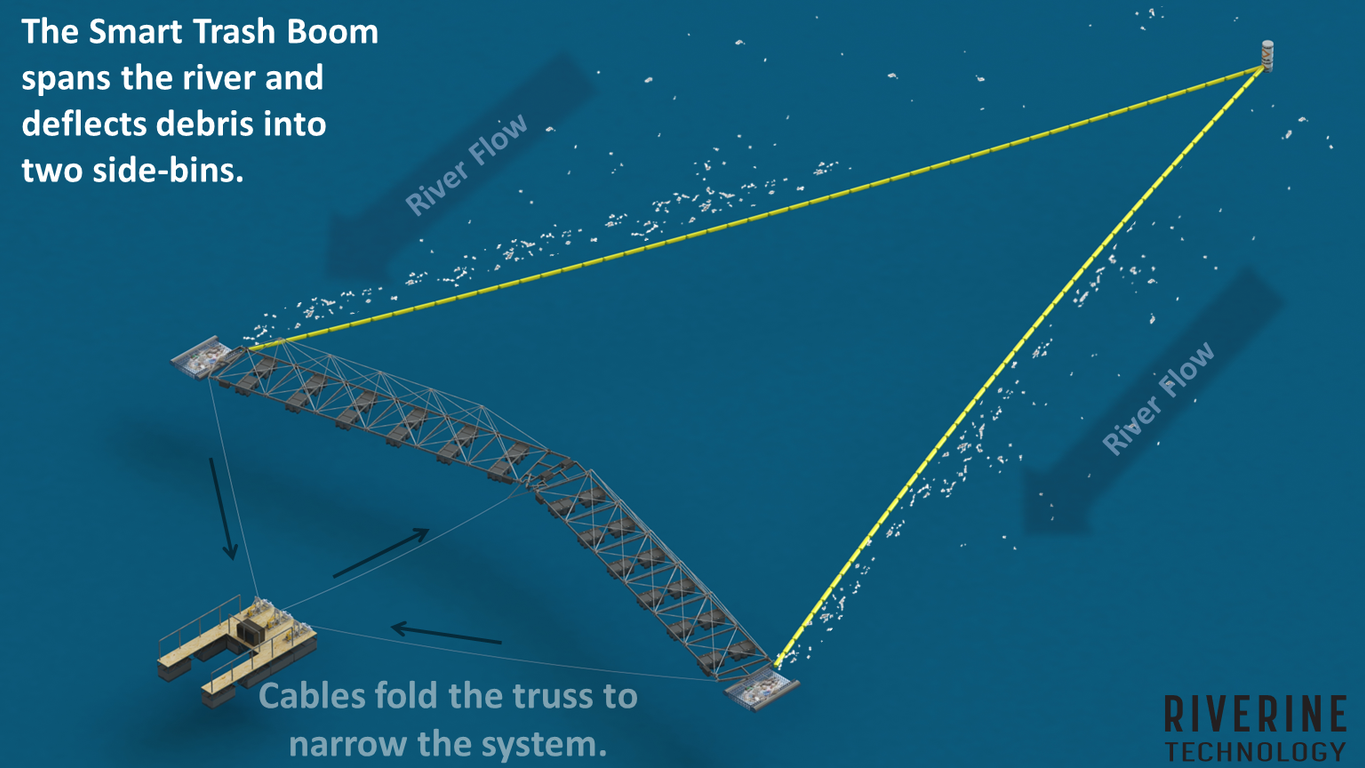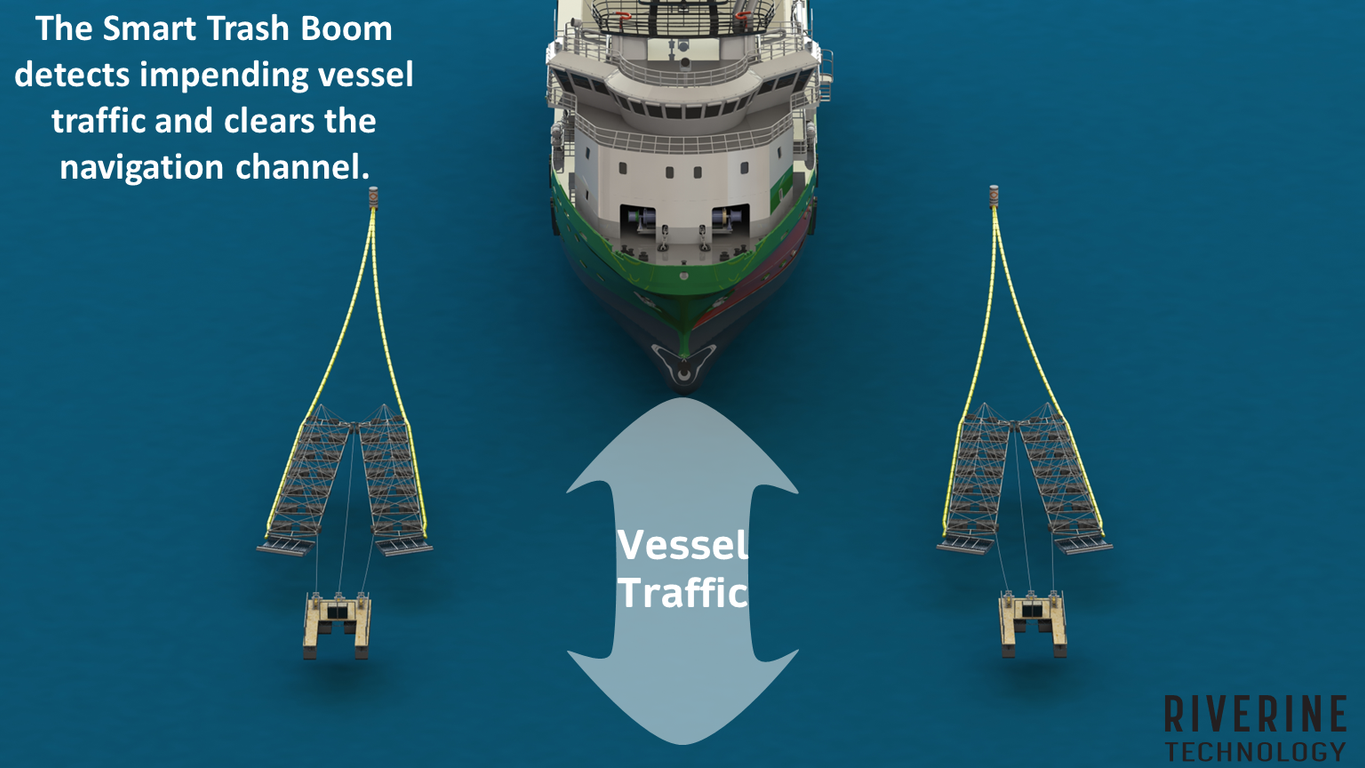Riverine Technology's
Smart Trash Boom
Collects ocean-bound debris without impeding vessel traffic


Floating river trash is a major source of ocean pollution. According to a 2017 analysis (Schmidt et al.), the world’s top ten most-polluting rivers carry an estimated 1.27 x 108 kg of “macro-plastic” waste into oceans each year –equivalent to three billion empty one-liter bottles. These same rivers, however, perform important economic and social functions as navigable waterways. For efforts to mitigate riverine pollution to be viable, the navigability of these waterways must be preserved.
While removing some debris post hoc is possible, a far more effective approach is intercepting riverine debris before it accumulates downstream. One of the most effective ways to accomplish this is with combinations of floating booms and traps.
The combination is most effective when the booms span wide portions of a river. Any litter floating on a portion of a river not spanned by the catch will escape collection. This makes it challenging to implement effective boom and trap systems on heavily-navigated rivers. For example, the Waterfront Partnership’s “Mr. Trash Wheel” and The Ocean Cleanup’s “The Interceptor” span wide sections of waterways with static trash booms, either blocking vessel traffic completely or requiring vessel traffic to circumnavigate the booms.
The Smart Trash Boom, developed by Riverine, allows boom/trap combinations to span wide portions of rivers without impeding vessel traffic. It accomplishes this by opening and closing the floating booms using a robust, cable-driven actuation system. When open, the system holds two floating booms in an inverted “V” shape, with the point of the “V” connected to an upstream mooring. The two floating booms redirect riverine debris into one of two trash traps at the ends of the “V.” Using AIS radio signals and RADAR target tracking, the system automatically detects impending vessel traffic, closes the trash trap, and clears the way for the vessel. The trap is closed by pulling the arms of the “V” together such that the entire system is contained within a long, narrow area running path parallel to the river flow. The actuation system functions in either unidirectional river sections or in tidal river sections with periodically reversing flow.
Riverine’s Smart Trash Boom techniques are adaptable to a variety of existing boom and trap technologies, whether simple or sophisticated. Funded since 2020, Riverine is preparing a prototype Smart Trash Boom system for demonstration on the Delaware River in 2023.
By automatically opening and closing in response to vessel traffic, the Smart Trash Boom allows boats to pass unimpeded. This method supports trash trap installations on the world’s most polluting, large, and heavily-navigated rivers.
Schmidt, C., Krauth, T. and Wagner, S., 2017. Export of plastic debris by rivers into the sea. Environmental science & technology, 51(21), pp.12246-12253.
© Copyright 2022. All rights reserved.
